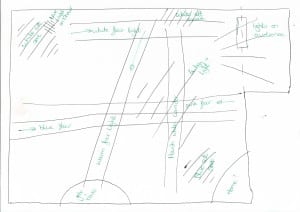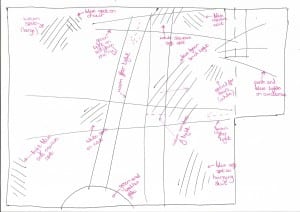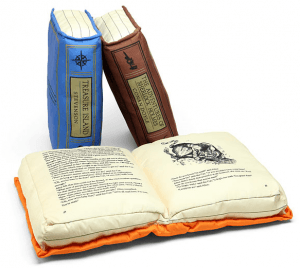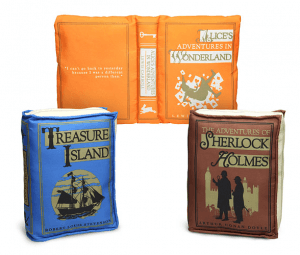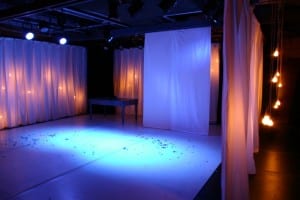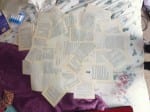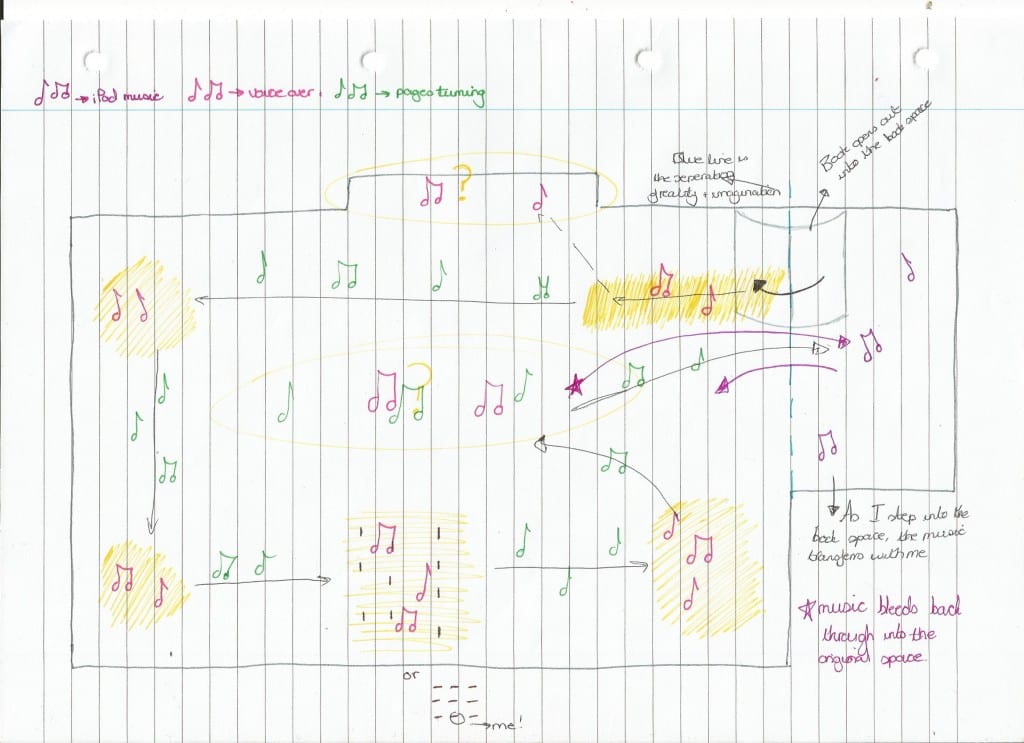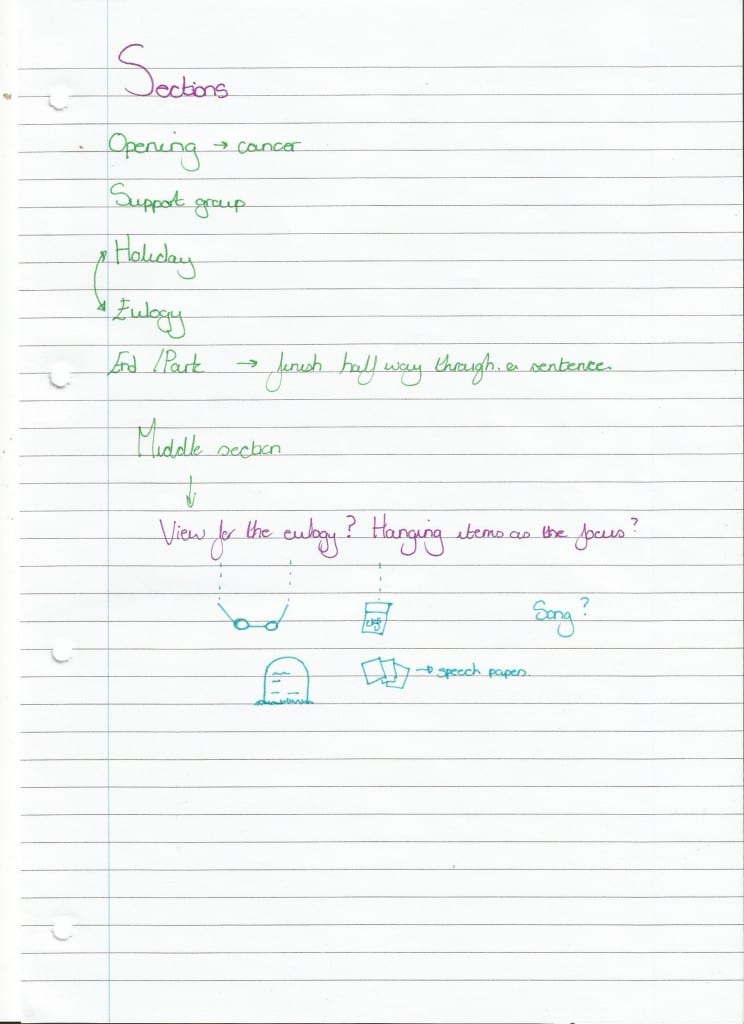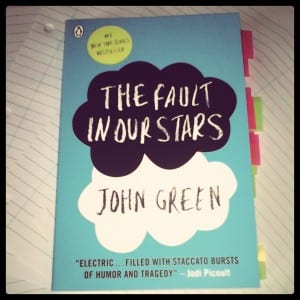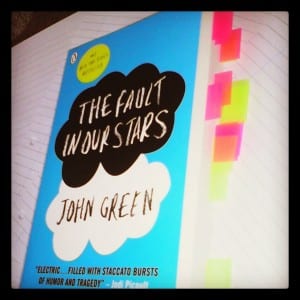…a little bit at first, then all at once” (Green 2012, p. 125).
If I were to go back to the start of this creative process, seeing this outcome would be impossible. The structure, ideas and aims have completely changed throughout the course. However, I could not be prouder of my piece in its final form. From the lights, props and creation of a story (well, the condensing of one), I believe I managed to create a truly magical experience; putting the world of The Fault In Our Stars on stage, aided by only a few props and beautiful lights and inviting the audience into this created world allowing them to experience a private, personal experience while not interrupting the action. From my earliest concepts, I wanted to involve the audience. To do more than just engage them, I wanted them to experience reading as a performance; by either presenting them with a world from one book, or the opportunity to delve in and out of multiple universes.
Throughout refining my final concept, the position of the audience came into question with every decision I made. In my earlier ideas the performance was heading down a more installation piece route, with the audience free to roam around the space, with me as the centre piece, reading. However, when I decided to separate the space between real life and fiction, I had to decide whether to allow the audience the same freedom as would have previously been given to them. If I allowed them to follow me around the space while I was exploring the story of The Fault In Our Stars, the space used would have to be more severely sectioned in order to accommodate 15 audience members. Also, the timing of having to ‘herd’ or at least suggest to audience to move to a certain point would have varied performance to performance. I finally decided that although the piece could possibly work as a promenade piece, it would create a richer performance if the audience stayed in their section, and I in mine. This decision allowed me to be more playful and artistic with my lighting choices; after all, lighting one body in exciting ways is easier than lighting fifteen.
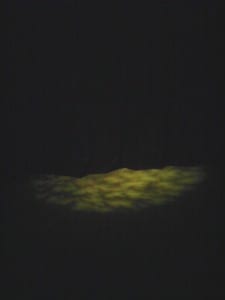 |
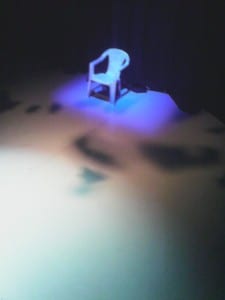 |
Although my final performance evolved massively from my early concepts, one aspect that remained was the audience engagement. By inviting them into my ‘bedroom’ -a small, intimate space- created within the studio, the experience became a lot more intimate. With this in mind, I chose to limit the capacity of my audience to fifteen. Although this was primarily imposed due to the fact that the space I chose for the audience was smaller than the usual allocated space within a studio, the limited audience meant that although this private event of reading became public, the intimacy felt when reading and discovering new worlds was still present.
Without the lights, the performance would not have worked. Yes, the script and story were in the place, but the lights made this fictional world come to life. The worlds created by lights -which not only acted as transitions from scene, but also as definitions- looked at points to be magical. The shadows created by the stars at the end of the piece was my favourite light created.
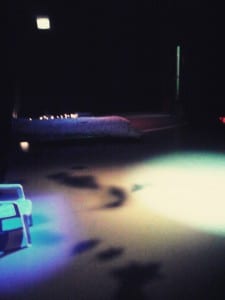 |
Now, this is not because it simply looks pretty. It also has a more important meaning within the story. At this point in the story, Hazel Grace is giving a eulogy for her soon to be deceased boyfriend so he can attend his own funeral. This lighting state is so beautiful because when the stars hanging above me from the ceiling were lit, their shadows were cast over the space separating where I stood and where Gus was sitting (the chair in the blue light). Connecting the two spaces through such a simple yet visually stunning element was lovely to create and significantly added to the atmosphere created by adding a touch of beauty to a haunting eulogy.
Here are the two sketches which I used to create my lights. From the initial mock-up to the final plan, the lights don’t change too much. They become slightly more refined and allow for more exploration of the space, while also being more considerate of the audience;
Some of the floor lights in my tech rehearsal were too intrusive on the audience, limiting what they could see in the performance space. So, in my final performance these lights were either removed completely, or transferred onto the grid so the audience’s view wasn’t hindered. The use of the lights gave my performance piece a slightly otherworldly and warm feel. Soft edges, slow fades and complimentary colours brought Hazel and Augustus’ story to life in a welcoming and dynamic manner.
The use of music acted as a guiding hand throughout the performance, transitioning the audience from section to section while aiding the progression of the story. The use of music kept the performance alive, and made the moments of silence stand out alongside the constant backing track. The music throughout the performance complimented the scenes I chose to adapt to stage. While helping to create the world of Hazel and Augustus’ love story, the music was also important because of the atmosphere I wanted to create. The audience entered the space to the song Good Old Days by P!nk, an artist who I often listen to while reading – as where all the songs used in the performance. When I read I listen to music, and at points the music seems to fit perfectly with the moments I am reading with, and the music used in the performance reflected this and were all taken from my reading playlist; listening to songs alongside the recorded narrative until the perfect song jumped out at me. When talking about music Goode in the creative process, says that
I’ll make sure there’s music playing, just as I would at a dinner party: not because I want anyone’s attention on it, but because I want straight away to let them know that the room will hold them, so they don’t have to reach strenuously across the gaps created by awkward first-day silence: we can just sit together and the room won’t feel intimidatingly silent if we’re all feeling a bit shy and turned-in. (Goode 2014, Online)
My use of music does something similar. Although not used in the setting in which Goode describes, the music acts as a secondary link to the performance, leaving no spaces for awkward silences in which the audience to feel uncomfortable in. It also draws the audience in – the music fills the room drawing the audience out of their perhaps slightly apprehensive selves when faced with a new experience.
Here is the script which I created by focussing solely on the love story between Augustus and Hazel, choosing to disregard complete sub-plots and other secondary characters, as the story between the two main protagonists -I believe- has enough weight to carry itself, creating a more personal and heartfelt tale.
Solo performance script – TFIOS
The ideas surrounding my props hardly changed throughout my process. From my initial idea of a book rug (which then transformed into my final performance) I have always wanted my props and set to be made from paper. I felt that this would be truer to a book -yes, when you read your imagination creates the world which the author creates on paper- but all of these ideas come from the book itself. For this reason all my props from the stars, shirt, chair and even duvet were made from book pages. Aesthetically I feel this added to the piece. It made the audience have a constant awareness that what they were witnessing was a world created in a book.
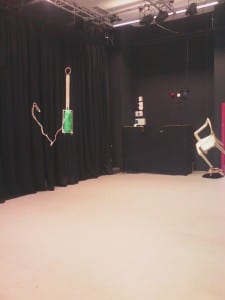 |
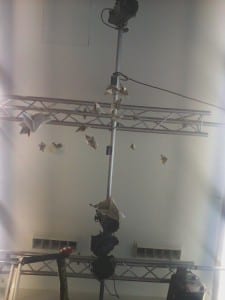 |
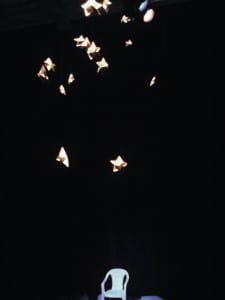 |
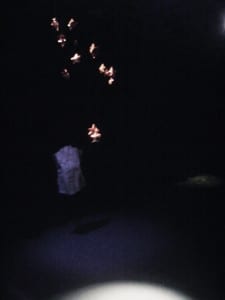 |
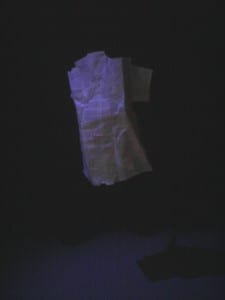 |
Borrowing from such artists as Chris Goode with his use of music as an underscore to his piece and his use of framing by both starting and ending it in the same way, my solo performance (although created from a book) was a unique and personal experience for all those involved. This module has allowed me to put one of my greatest passions on stage, and I couldn’t think of a more fitting and ‘me’ performance to end my university experience.
Works Cited
Goode, Chris (2014) In My Room. Beescope.com [Blog] 24 March. Available at: http://beescope.blogspot.co.uk/2014/03/in-my-room.html [Accessed 1 May 2014].
Green, John (2012) The Fault In Our Stars, London: Penguin.

